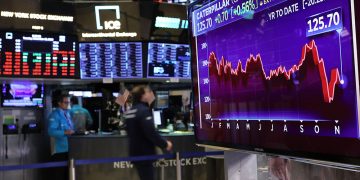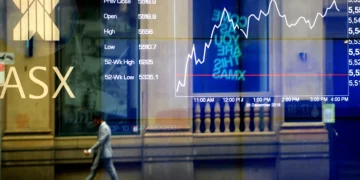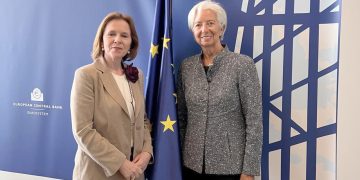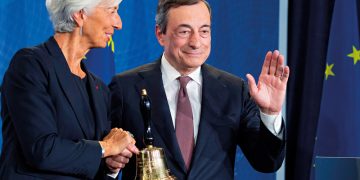As Europe emerges from the economic disruptions of the COVID-19 pandemic, the continent faces a critical crossroads. The immediate aftermath of the pandemic saw a swift, coordinated response from EU institutions and member states, leading to a remarkable economic rebound. However, beneath the surface of recovery lies a complex web of vulnerabilities that could leave Europe exposed to future shocks. The challenges Europe faces today—including mounting debt, political instability, and rising inflation—pose serious risks to the stability of the region. This article examines the state of Europe’s economy, the potential triggers for the next crisis, and the policy measures the European Union (EU) is considering to safeguard its future.
Introduction: Europe’s Economic Recovery Post-Pandemic and Its Vulnerabilities
The COVID-19 pandemic caused an unprecedented global economic downturn, and Europe was no exception. The EU’s economy shrank by 6.3% in 2020, one of the deepest recessions the region had seen in decades. In response, governments across Europe implemented emergency fiscal policies, providing massive financial support to businesses, workers, and households. The European Central Bank (ECB) also launched aggressive monetary easing measures, including low interest rates and large-scale bond purchases.
By 2021, the European economy began its recovery, buoyed by the rollout of vaccines, the reopening of businesses, and the injection of stimulus funds from the EU’s €750 billion recovery fund. By the end of 2022, the region had regained its pre-pandemic economic levels, and growth projections for 2023 were optimistic. However, beneath the surface of this apparent recovery, several factors have raised concerns about the sustainability of Europe’s economic rebound.
First, many European countries have accumulated significant levels of public and private debt as a result of pandemic-related spending. This debt burden, coupled with rising inflation and energy prices, has created an environment of economic uncertainty. Moreover, political instability in several EU countries, combined with the ongoing challenges posed by the war in Ukraine, has further complicated Europe’s path to long-term stability.
Europe may have recovered from the immediate shock of the pandemic, but its underlying vulnerabilities threaten to destabilize its economy in the future. Whether Europe is truly ready for the next economic crisis remains to be seen.
The Debt Crisis: How Mounting Public and Private Debt Could Trigger a Crisis
One of the most significant risks to Europe’s economic stability is its mounting debt levels. In response to the pandemic, governments across the EU engaged in expansive fiscal policies to keep economies afloat. The result was a sharp increase in public debt, particularly in heavily affected countries like Italy, Spain, and France. In fact, public debt in the EU has reached historic highs, with the average debt-to-GDP ratio for eurozone countries exceeding 100%.
While the debt-driven response to the pandemic helped prevent a deeper recession, the long-term implications of this high debt load are concerning. High levels of government debt make it difficult for countries to respond to future economic shocks, as their fiscal space becomes constrained. If Europe were to experience another economic downturn or crisis, governments may not have the financial flexibility needed to stimulate their economies through public spending.
Moreover, private debt in Europe has also risen significantly in recent years. Households and businesses alike are carrying higher levels of debt, driven by low interest rates and easy credit conditions. The combination of high public and private debt makes Europe vulnerable to an economic crisis triggered by factors such as rising interest rates, financial instability, or a downturn in global demand.
The situation is particularly precarious for southern European countries, which have struggled with high debt levels for years. While the European Central Bank’s monetary policy has provided some relief in terms of low borrowing costs, there are concerns that rising interest rates—driven by inflationary pressures—could lead to higher debt servicing costs and trigger a crisis in countries that are already highly indebted.
The burden of debt, combined with limited fiscal space, makes it difficult for Europe to respond effectively to future shocks. If public and private debt levels continue to rise, the next economic crisis could easily be triggered by financial instability or external shocks, leaving Europe vulnerable to a prolonged period of stagnation.
Economic Uncertainty: Political Instability and Inflation as Risks for the Eurozone
In addition to its debt challenges, Europe faces significant economic uncertainty driven by political instability and rising inflation. Political instability is particularly evident in the context of growing populist movements across the EU. In recent years, several EU member states, including Hungary, Poland, and Italy, have experienced political shifts that threaten the cohesion of the EU.
In countries like Hungary and Poland, the rise of populist governments with anti-EU and anti-globalization rhetoric has created tensions within the bloc. These tensions have manifested in disputes over issues such as judicial independence, press freedom, and immigration policy. While these countries have thus far managed to maintain their EU membership, ongoing political instability could lead to fragmentation within the union, particularly if these governments continue to challenge EU norms and policies.
Meanwhile, Italy, long plagued by political instability, faces a volatile political environment in which coalition governments are fragile and often short-lived. The lack of political stability in Italy makes it difficult to implement long-term economic reforms and policies that could improve the country’s economic competitiveness. If political instability continues to hamper economic reforms, Italy’s debt problem could worsen, further destabilizing the region.
Another significant risk facing Europe is inflation. Inflation in the eurozone has been steadily rising in recent months, fueled by higher energy prices, supply chain disruptions, and rising wages. In 2022, inflation in the eurozone surged to levels not seen in decades, with the ECB implementing aggressive monetary tightening measures to curb price increases.

Rising inflation presents several risks for Europe. First, it erodes purchasing power, particularly for low- and middle-income households. As consumer prices rise, households are forced to cut back on spending, leading to lower demand for goods and services. Second, inflation creates uncertainty for businesses, which face higher input costs and may struggle to maintain profitability. This could lead to lower investment, reduced hiring, and a slowdown in economic growth.
Inflation also poses a challenge for the European Central Bank. As the ECB raises interest rates to combat inflation, it risks slowing down economic growth, especially in countries with high debt loads. The delicate balancing act between controlling inflation and maintaining growth will be one of the key challenges for the ECB in the coming years.
Finally, inflation could lead to social unrest. As the cost of living rises, protests and strikes may become more frequent, particularly in countries where economic inequality is already a concern. Political instability and social unrest could further complicate Europe’s economic recovery and heighten the risk of a crisis.
Policy Responses: What Measures the EU Is Considering to Safeguard Its Economy
In response to these challenges, the European Union has been considering a range of policy measures to safeguard its economy and prepare for potential future crises.
Fiscal Reforms and Debt Management
One of the key areas of focus for the EU is fiscal reform. Several EU member states, particularly in southern Europe, have called for reforms to the EU’s fiscal rules, which limit member states’ budget deficits and public debt levels. While the EU has temporarily suspended these rules in response to the pandemic, there is ongoing debate about whether these rules should be permanently relaxed to give governments more fiscal space to respond to future crises.
In addition to fiscal reforms, the EU is exploring new ways to manage its debt burden. For example, there are calls for the issuance of “eurobonds,” which would allow member states to pool their debt and borrow collectively at lower interest rates. This could help reduce the debt burden on individual countries and prevent a future debt crisis from spiraling out of control.
Strengthening the Eurozone’s Banking Union
Another policy priority is strengthening the banking union within the eurozone. The banking union aims to create a more integrated and resilient financial system by harmonizing banking regulations and creating a central mechanism for resolving failing banks. A stronger banking union could help prevent financial instability from spreading across the region in the event of a crisis.
Inflation Control and Monetary Policy Coordination
To address rising inflation, the ECB has already begun raising interest rates, but the central bank will need to carefully manage its monetary policy to avoid stifling growth. The ECB has emphasized the importance of using all available tools to control inflation without triggering a recession. Additionally, the EU is exploring ways to improve the coordination of monetary and fiscal policies across member states to ensure a more unified response to future economic challenges.
Political Cohesion and EU Reform
Finally, political cohesion within the EU is crucial to ensuring the region’s long-term stability. In response to rising populism and political instability, the EU is exploring ways to strengthen its democratic institutions and promote greater unity among member states. Efforts to improve the functioning of EU institutions, ensure better governance, and foster a stronger sense of European identity will be key to preventing fragmentation and ensuring that the EU can weather future crises.
Conclusion
Europe is at a critical juncture. While the EU has successfully navigated the immediate economic fallout of the COVID-19 pandemic, significant vulnerabilities remain. The region’s high levels of debt, political instability, rising inflation, and social unrest all pose risks to economic stability. However, Europe has the tools and policy mechanisms to address these challenges, provided it can act quickly and decisively.
The coming years will be crucial for Europe as it seeks to balance fiscal responsibility with economic growth, maintain political cohesion, and safeguard its financial stability. Whether Europe is ready for the next economic crisis will depend on its ability to address these vulnerabilities and build a more resilient and sustainable economy for the future.



































